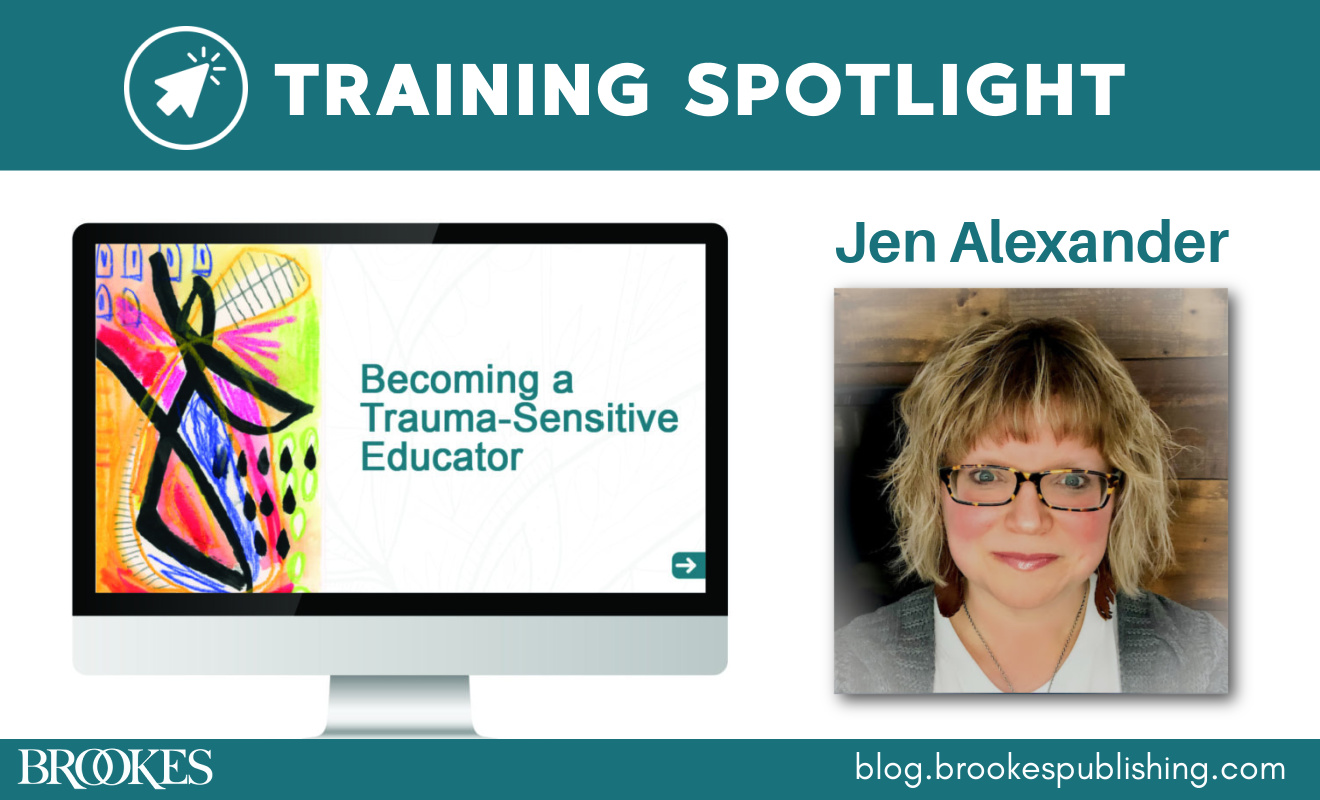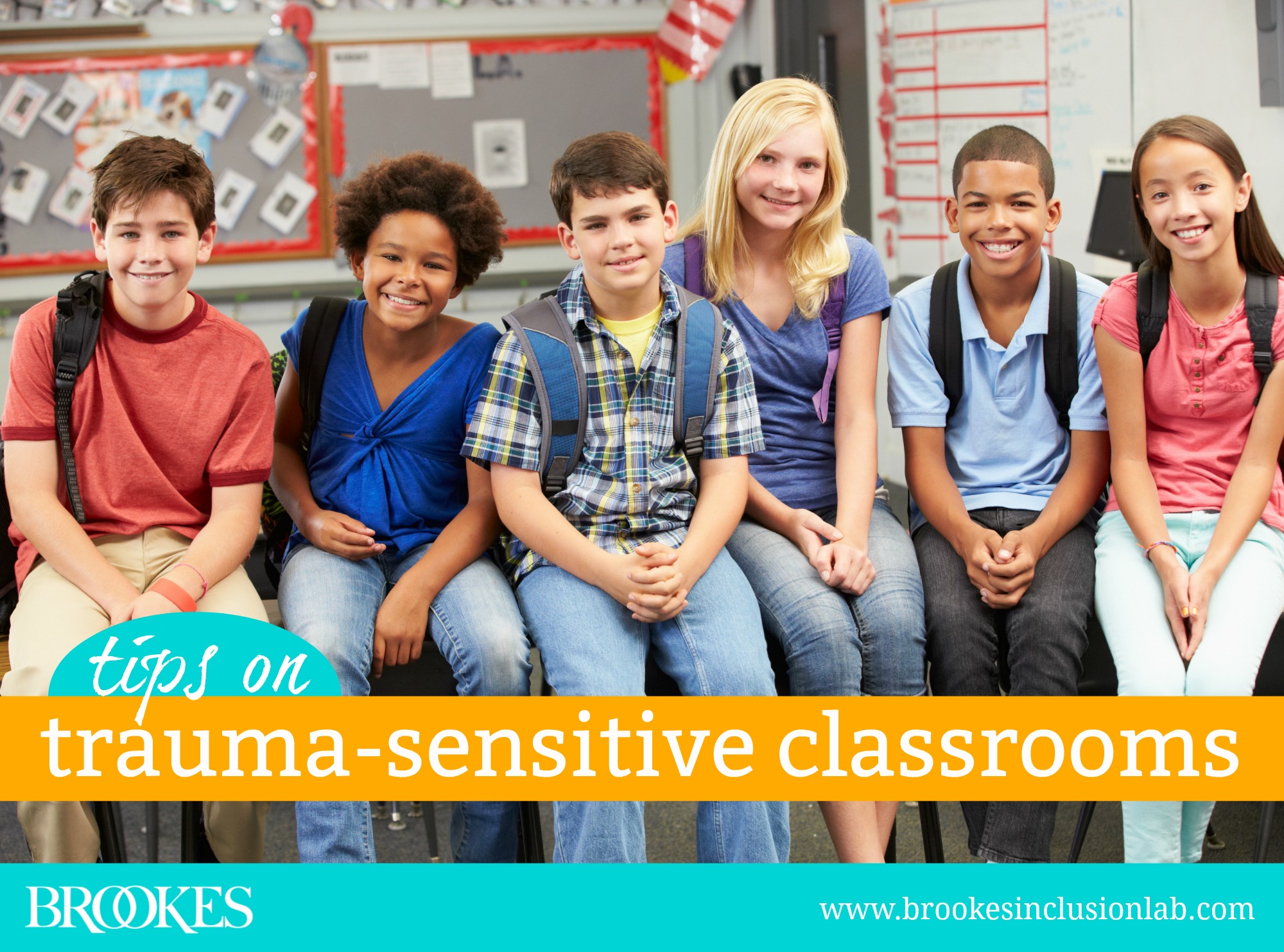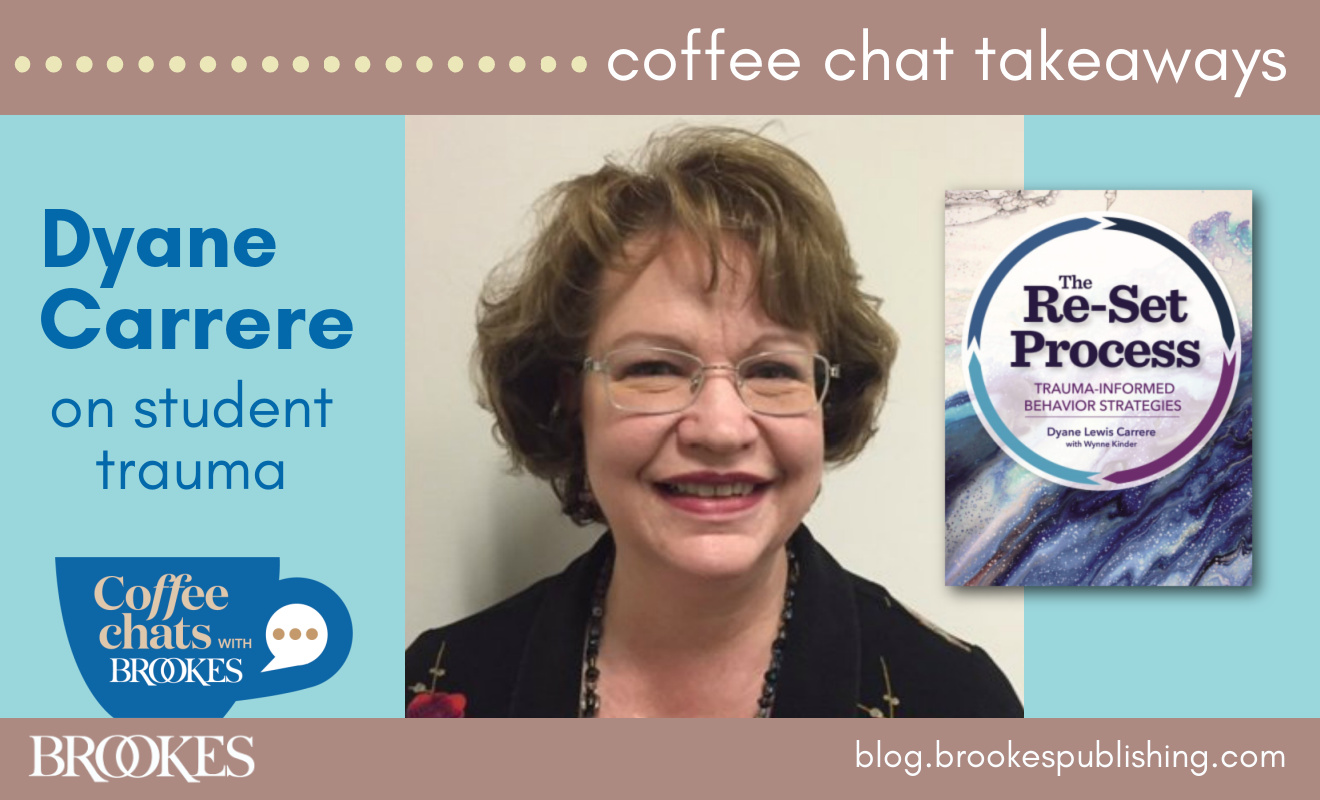Training Spotlight: Jen Alexander on her Becoming A Trauma-Sensitive Educator virtual course
October 18, 2022
Understanding and addressing the effects of trauma—both for students and the adults who teach and work with them—is essential to creating a safe school environment that supports learning and social-emotional well-being. Today we’re welcoming Brookes author and trauma expert Jen Alexander to talk about her new virtual course on Becoming A Trauma-Sensitive Educator. Offering in-depth guidance, strategies, and insights from “Ms. Jen” and other experienced educators, this course is a must for school teams looking for ways to build more responsive, trauma-sensitive schools.
Here’s why every educator can benefit from this course, in Ms. Jen’s own words.
First: how does trauma affect students’ learning, and why is trauma-sensitive education so important?
Trauma overwhelms staff and students, often causing the body to expend big energy on fight, flight, or freeze responses. Alternatively, trauma can be part of a nervous system shutdown. Both types of reactions can affect health, learning, and behavior in the short term, but there are long-term implications too. This is especially true of repeated trauma in a child’s earliest years of life, which can impact how the brain and body develop. This trauma, called developmental trauma, can hinder learning and school success.
What are the main characteristics of an effective trauma-sensitive educator?
In short, trauma-sensitive educators commit to learning about trauma’s impact and how to promote safety, supportive relationships, healthy regulation, and learning. With a growing understanding of both trauma and recovery, trauma-sensitive educators notice the need and meet the need within themselves, with their teams, and with students and families. This doesn’t mean it’s any single school staff member’s responsibility to notice and meet every need. It also doesn’t require that you turn yourself into a social worker or counselor (if that’s not your job role). Rather, it’s about how we work together to anticipate and meet needs collectively within our areas of expertise. This includes classroom teachers, other instructors, and administrators as well as support staff, paraprofessionals, administrative assistants, bus drivers, and more.
When I say everyone at school needs to be a trauma-sensitive educator, I mean everyone. No matter your job title, this course will teach you how to respond effectively to the needs of people who experience trauma both inside and outside of school at any point in time. And you’ll be encouraged to work together to change policies and practices within education so that trauma at school can be prevented. Throughout, I’ll emphasize how you can empower one another and your students—always centering each person’s wisdom and capacity for making decisions that are best for themselves. After all, trauma-sensitive education isn’t something we do to kids or even for others. It’s what we do with one another in relationships that are rooted in shared power. Ultimately, we must embrace the role of community in healing and encourage youth to stand up for themselves and for others, so there is less trauma and more freedom for all of us in the future.
Tell us more about your new virtual course on Becoming A Trauma-Sensitive Educator: what are the most important things educators will learn?
Educators who take this course will learn how to better understand the effects of trauma—and most importantly, what they can do about it within their school roles to co-create change. Some course learning is focused on the impact school staff members make in their own interactions with youth. Others are classroom-focused—think ideas for building community, or whole-class trauma-sensitive SEL lessons. There is also an emphasis on leading for change within schools.
Specifically, educators will examine their own beliefs related to trauma-sensitivity and learn how to make decisions using a trauma-informed lens. You’ll explore trauma-sensitive practices utilized in schools across the world according to the four essentials of safety, connection, regulation, and learning. You’ll reflect on your own strengths and current practices and set goals for your next steps. With the extension activities, student lesson ideas, and tons of resource suggestions for learning more, this course is a springboard for your professional trauma-sensitive journey—no matter your role. You’ll also explore the importance of setting healthy boundaries while you do this important work.
What are the benefits of taking your virtual course instead of (or in addition to) just reading a book on trauma-sensitive teaching?
While masses of educators are understanding—and honestly, begging for—trauma-informed training, flexibility in how to obtain professional learning is critical. That said, educators tend to be “people people.” Book learning paired with an online course that allows you to learn directly with me offers the human-to-human connection that many educators seek and benefit from. In this course, you’ll also watch videos of other educators who are doing this work.
If you’re facing barriers to scheduling or attending a live training, this online course is ideal: it’s available on demand for individuals, schools, or districts, depending on your preference. Created with adult learning in mind, it offers many options for engaging with the content. From readings and videos that offer instruction paired with various real-life examples, to talking points you might explore with a thought partner, to guidance on how to create your own lessons or activities, this course is designed for multiple ways of taking in new information and demonstrating your learning. Everything is practical and created to meet each educator or leader right where you are so you can identify your best next steps, whether you directly serve youth and families, or if you’re a consultant who supports other educators.
Take this course to start becoming a trauma-sensitive educator, use it as a refresher in your already-established journey (there are many new ideas here!), or offer it to team members who are onboarding into a school where trauma-sensitive practices are well under way. Every educator can benefit from the course!
Is your course more about the theoretical underpinnings of trauma-sensitive education, or will educators learn how to take action, too?
This course shares a plethora of real-life examples that will help you apply theory to practice in your PreK-12+ learning environment. I will give you the theoretical understanding you need to get started, paired with specific dos and don’ts for your work as a trauma-sensitive educator. You’ll also watch approximately 20 videos from educators around the world, sharing how they’ve applied their trauma-sensitive learnings to their own unique settings. Each is organized according to the four essentials of helping students feel safe, be connected, get regulated, and learn.
My hope is that you’ll try the ideas presented or take your own action by modifying what’s suggested for your students. The digital workbook I’ve created for you will help you take notes, unpack your thinking, deepen your understanding, and guide you to incorporate these learnings into your own trauma-sensitive practice.
Does trauma-sensitive education mainly apply to the teacher-student dynamic, or can it strengthen relationships between adults on the education team, too?
Trauma-sensitive education benefits everyone, youth and adults included. Educators themselves were under tremendous stress before the pandemic, and they endured ongoing changes, overwhelming stress, and—for many—decreasing public support during the phases of COVID-19. The risks for burnout are higher now than ever before.
This course acknowledges these difficulties and encourages educators to come together to center not only student feelings and needs but also their own within the profession. Educator health matters in its own right. Taking good care of kids requires taking good care of educators. We have an opportunity now to work together to reimagine schooling in ways that will benefit students, families, and staff, and the discussions in this course will help you get there. Please know that it’s an honor to partner with you as we create change together.
Is there anything else you’d like to share with busy educators who may feel that instruction on trauma-sensitive education is a “nice to have” rather than a “need to have”? What are the long-term benefits of trauma-sensitive education, for students and for teachers?
Education is for every student—every single one. That means educators have a responsibility to understand the needs of the masses of youth who have experienced trauma because it’s impacting school success for large numbers of learners and staff. This can show up as attendance concerns, behavior changes, or coursework (or job) difficulties—all of which are topics of concern to school teams.
As ethical professionals, we must learn about current practices that cause trauma at school so we can stop the harm, facilitate healing, and offer access to high levels of learning for every student, every day. To do this, we need expertise about trauma so that we are sensitive to the individual needs of people in our schools. Overall, it can help us know when to lean into nurture and when to challenge.
Stress levels on any given day will change. Our need to be ready for them is a constant. While that can seem overwhelming, there is hope in starting from a place of honesty together. In being real about the hard stuff, we can address it authentically—all while acknowledging the good stuff we can draw from in making meaningful change. No matter what, you’re not alone. I’m here to help you as you help kids!
***
Big thanks to Jen Alexander for being here today and sharing the benefits of her Becoming A Trauma-Sensitive Educator course. It’s a true game-changer for educators and an essential step toward building a safe, supportive school environment that helps all students learn and thrive. Take your next step today: learn more about the course and sign up for news about pricing and availability at the link below!
Stay up to date on the latest posts, news, strategies, and more!
Sign up for one of our FREE newslettersMore posts like this

11 Things You Can Do Right Now to Build a More Trauma-Sensitive Classroom
February 19, 2019
7 Things Every Teacher Should Know about the Physiological Impact of Trauma
November 23, 2021

Write a Comment
Your email address will not be published. Required fields are marked *
Post a Comment